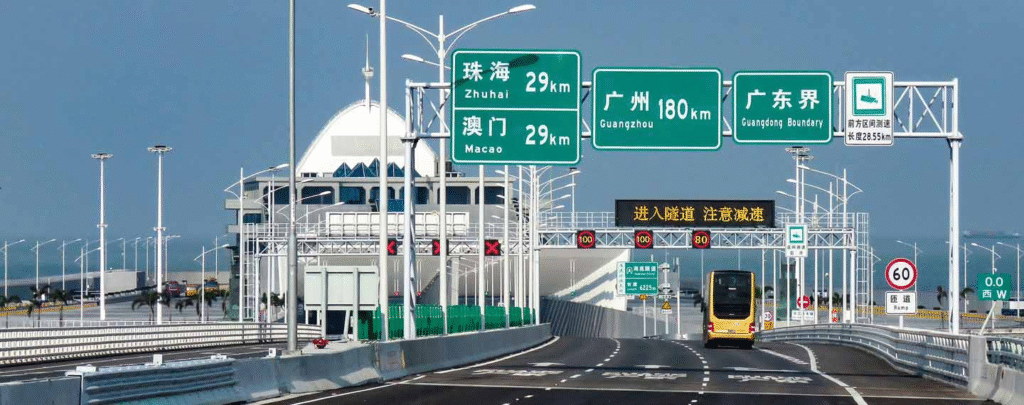How the Greater Bay Area (GBA) Can Accelerate Economic Growth, Innovation, and Startups in Southeast Asia: The Guangdong-Hong Kong-Macao Greater Bay Area (GBA) is emerging as one of the world’s most dynamic innovation hubs. Integrating Hong Kong, Macau, and nine major cities in Guangdong province, the GBA is China’s flagship megaregional initiative. With a GDP exceeding $2 trillion—surpassing that of Italy and Canada—it represents an economic cluster that rivals global giants like Silicon Valley. As Southeast Asia looks to scale up its startup ecosystem and digital economy, the GBA presents transformative opportunities for trade, investment, and innovation.

1. GBA: An Economic and Innovation Powerhouse
According to the World Bank (2023), the GBA’s GDP reached approximately $2 trillion, supported by a population of over 86 million—larger than Germany’s. Its major cities play unique and complementary roles:
- Shenzhen is renowned for tech innovation and hardware manufacturing.
- Hong Kong serves as a global financial center and capital market hub.
- Guangzhou anchors trade, logistics, and advanced manufacturing.
Backed by the 14th Five-Year Plan and the GBA Development Outline, the initiative prioritizes AI, fintech, biotechnology, and smart manufacturing, leveraging infrastructure like the Hong Kong-Zhuhai-Macau Bridge and cross-border high-speed rail to deepen regional connectivity.


2. GBA’s Strategic Influence on Southeast Asia
A. Investment and Capital Flows
GBA-based tech giants such as Tencent, Huawei, and DJI are increasingly investing in Southeast Asia. In 2022 alone, Chinese tech investment in Singapore and Indonesia reached $8.2 billion (KrASIA, 2023).
Hong Kong’s capital markets and role as a renminbi (RMB) offshore center position it as a financial bridge for investments into ASEAN economies.

B. Technology Transfer & Startup Collaboration
Southeast Asia’s startups benefit from the GBA’s robust supply chains and innovation clusters. Hardware-focused startups in Vietnam, Malaysia, and Thailand often source components and R&D support from Shenzhen.
Partnerships include:
- Grab collaborating with GBA-based AI firms for route optimization.
- Lazada leveraging GBA’s smart logistics for faster cross-border delivery.
Innovation centers such as HKSTP and Shenzhen InnoX also offer incubation and acceleration programs for ASEAN startups.


C. Trade & Supply Chain Realignment
With rising tariffs from the U.S.-China trade war, manufacturers in the GBA are increasingly relocating or expanding into Southeast Asia. According to McKinsey & Company (2022), 15% of Chinese manufacturers have moved partial operations to ASEAN nations, particularly Vietnam and Thailand.
Logistics platforms like Cainiao (Alibaba) and JD Logistics are expanding regional networks that integrate GBA tech into Southeast Asia’s growing e-commerce infrastructure.
3. Innovation & Research Impact: Building Smart ASEAN
A. Academic and Research Partnerships
Joint R&D centers are emerging between the GBA and ASEAN universities:
- HKUST collaborates with National University of Singapore (NUS) on fintech and sustainability.
- Shenzhen Institutes of Advanced Technology (SIAT) works with Thai and Malaysian institutions on AI, robotics, and biomedical engineering.
These collaborations enhance technology transfer and upskill local talent.

B. Digital Economy & Fintech Expansion
Hong Kong and Singapore have pioneered a Fintech Corridor, facilitating cross-border e-wallets and blockchain innovation. For example, AlipayHK and WeChat Pay are now interoperable with payment systems in Thailand and Malaysia.
Additionally, CBDC (Central Bank Digital Currency) pilots involving the People’s Bank of China and Bank of Thailand show potential for seamless digital trade and remittances across borders.

4. Challenges and Risks
A. Geopolitical Headwinds
U.S.-China tech decoupling could limit semiconductor exports and technology access from the GBA to ASEAN. Export controls on sensitive tech, especially in AI and chips, may slow collaboration.
B. Regulatory Divergence
Data privacy and localization laws in countries like Indonesia and Vietnam could complicate the operations of GBA-based cloud and tech service providers.
C. Local Startup Competition
GBA-backed firms must contend with dominant local players. Grab (Singapore) and Gojek (Indonesia) already have strong consumer bases and regulatory backing, challenging new entrants.

5. Future Outlook: A Shared Innovation-Driven Future
According to Goldman Sachs (2023), by 2030, the GBA is projected to contribute over 30% of China’s high-tech exports to ASEAN, up from 18% in 2020.
Emerging areas of collaboration:
- Smart Cities: Joint projects in 5G, IoT, and urban mobility.
- Green Tech: Clean energy and sustainable transport initiatives aligned with ASEAN’s climate goals.
These trends position the GBA as a catalyst for sustainable growth and innovation across Southeast Asia.
The Greater Bay Area’s strength lies not just in its economic scale but in its unique integration of finance, technology, and infrastructure. As Southeast Asia continues its digital and entrepreneurial rise, the GBA can be a vital partner—fueling investment, accelerating startup growth, and enabling cross-border innovation. For ASEAN nations, embracing collaboration with the GBA can unlock long-term economic transformation.
Disclaimer: The information presented in this article is for informational purposes only and does not constitute financial, investment, or policy advice.


